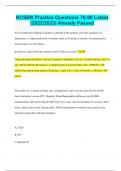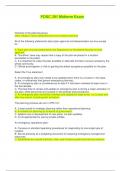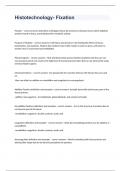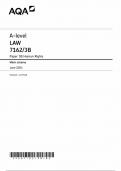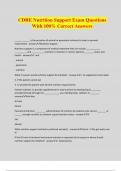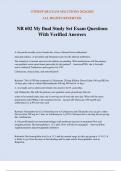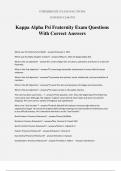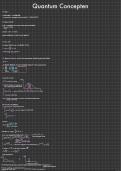Table of Contents
Grand scheme of things ................................................................................................................................. 2
1. Introduction and doing research ................................................................................................................ 3
Levels of measurement ...................................................................................................................................... 3
Central tendency of distribution ........................................................................................................................ 4
Frequency distribution ....................................................................................................................................... 4
PU2: SPSS Descriptive statistics ......................................................................................................................... 5
PU3: Recoding variables .................................................................................................................................... 6
PU4: SPSS Chart Builder ..................................................................................................................................... 7
2. Principles of hypothesis testing .................................................................................................................. 9
Null Hypothesis Significant Testin (NHST) .......................................................................................................... 9
Individual scores and Sample scores .................................................................................................................. 9
Mean as a model ............................................................................................................................................. 10
The 95% Confidence Interval ........................................................................................................................... 10
Reliability analysis ........................................................................................................................................... 10
3. Effect sizes ............................................................................................................................................... 11
4. T-tests ...................................................................................................................................................... 12
T-tests .............................................................................................................................................................. 12
5. ANOVA analysis ....................................................................................................................................... 14
ANOVA ............................................................................................................................................................. 14
6. Chi-Square test ........................................................................................................................................ 22
Correlation ....................................................................................................................................................... 22
Chi-Square test ................................................................................................................................................ 22
7. Correlation analysis.................................................................................................................................. 26
Correlation analysis ......................................................................................................................................... 26
8. Regression analysis .................................................................................................................................. 31
Regression ....................................................................................................................................................... 31
Regression model............................................................................................................................................. 32
Regression analysis .......................................................................................................................................... 33
9. Summarizing everything........................................................................................................................... 37
Dummy analysis with a dummy variable ......................................................................................................... 37
Variables .......................................................................................................................................................... 39
1
,Grand scheme of things
Number (Kind) IV Levels IV Kind DV Design Analysis
0 - continuous Against fixed One sample t-test
value
1 (categorical: 2 continuous between subjects t-test for indep. measures
dichotomous)
continuous within subjects t-test for dep. measures
1 (categorical) ≥3 continuous between subjects One-way ANOVA
≥ 2 (categorical) ≥2 continuous between subjects Factorial ANOVA
1 (categorical) ≥2 categorical between Pearson Chi-square
subjects
1 (continuous) - continuous - Correlation /(Simple) Regression
2
,1. Introduction and doing research
Levels of measurement
Levels of measurement → show relation between IV and DV.
• Two main categories:
1. Categorical variables – made up of categories CATEGORICAL
Binary variable: person can be placed in either one of the two, person can’t be both
(men or women, dead or alive, pregnant or not, relationship or not)
Nominal variable: person can choose to be multiple
(vegetarian, omnivore, vegan, fruitarian)
(blue, red, gold uniform color)
Ordinal: someone has something more of … than the other
(first, second, third medal)
(education: senior, sophomore etc.)
2. Continuous variables – made up of scores/numbers CONTINIOUS
Interval: meaningful distances/equal interval represents equal differences
(years)
Ratio: zero-point is meaningful
(time, weight, length)
Variables → an independent variable (HAPPENS FIRST) determines dependent variable.
3
, Central tendency of distribution
Central tendency of the distribution → score that represents the center of the
distribution of a variable.
• Three measures of central tendency:
1. Mean: sum of scores divided by number of scores/ average score.
BEST measure of central tendency in continuous variables
2. Median: middle score when they are ranked in order from small to big
Median changes when scores are added/deleted
Median does not change when scores become higher/lower
BEST measure of central tendency in categorical variables
3. Mode: score that occurs the most
Frequency distribution > tallest bar
• Dispersion: amount of variation/spread of scores around the mean
• Range: smallest score subtracted from largest score (biggest score – smallest score)
• Standard Error vs. Standard Deviation
4. Standard Deviation (SD): error/difference between participant’s score and sample
mean. Statistical difference that can be calculated.
5. Standard Error (SE): error from each participant’s mean
Inferential difference that can only be estimated.
6. Total Error: error of all participants summed up
7. Sum of Squared Error (SS): square of total error to remove all minus’
8. Variance: square of SD / average variability of the variable
Frequency distribution
Frequency distribution → shows the distribution (VERSPREIDING) of values/scores in a
data set.
• Standard Normal Distribution shows a symmetrical distribution around the center of all
scores. Bell shaped graph in which the mean, mode and median are the same number.
(Mostly in natural occurring things like height, IQ, shoe size)
• Distributions that are not a SND, show some kind of problems with skewness and/or
kurtosis.
Skewness: scores are clustered to either left side (positive skew ‘+’) or right side (negative
skew ‘-‘)
Kurtosis: scores are clustered at the ends of the distribution (Leptokurtic with high peak/thin
OR Platykurtic with low peak/chubby)
The further away the Zskewness and Zkurtosis are from 0, the more it differentiates from a
SND.
4

